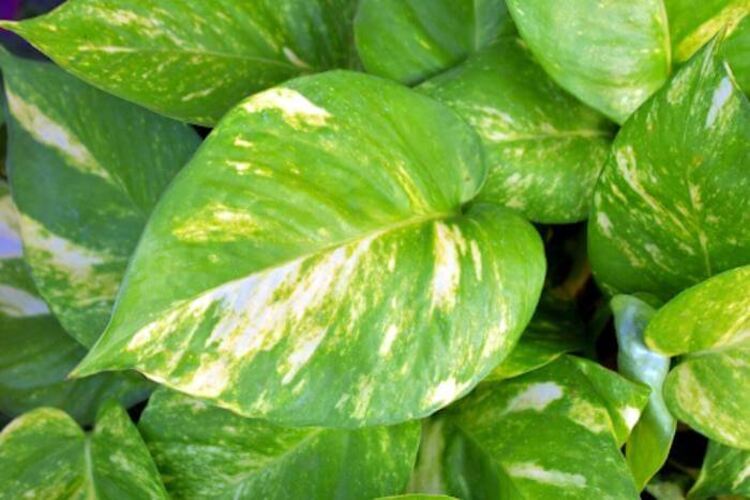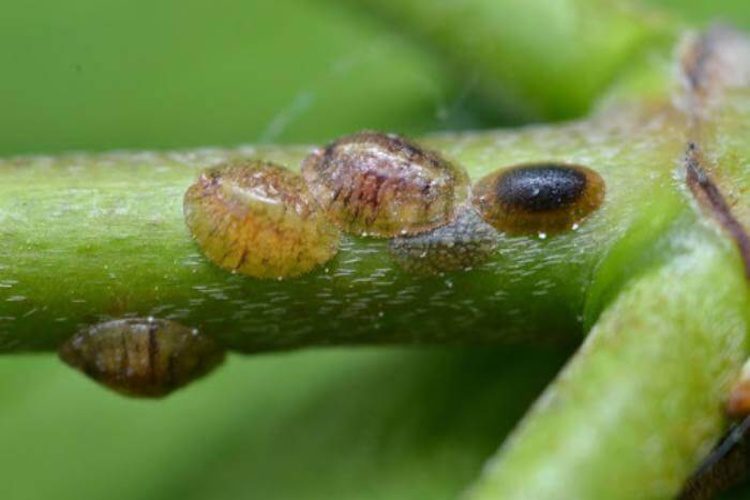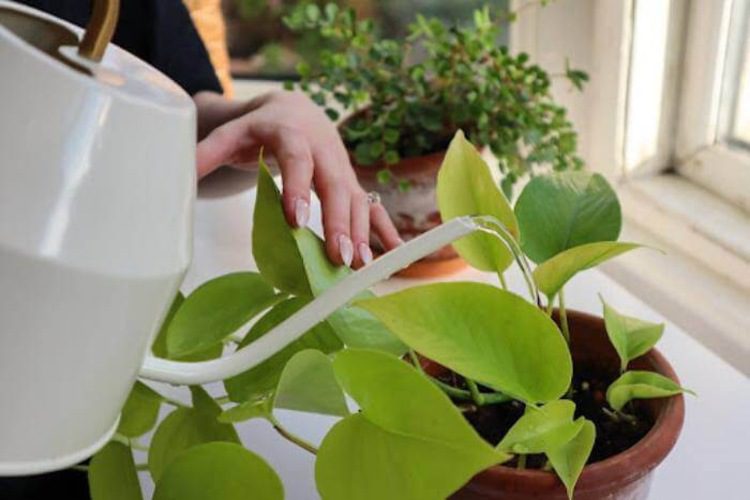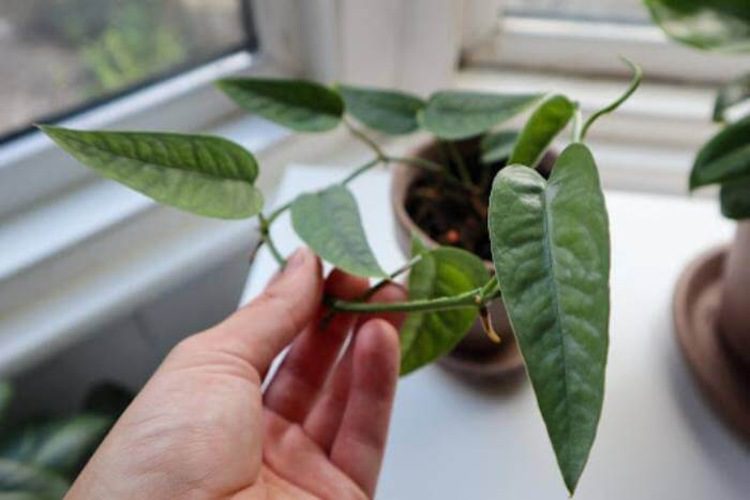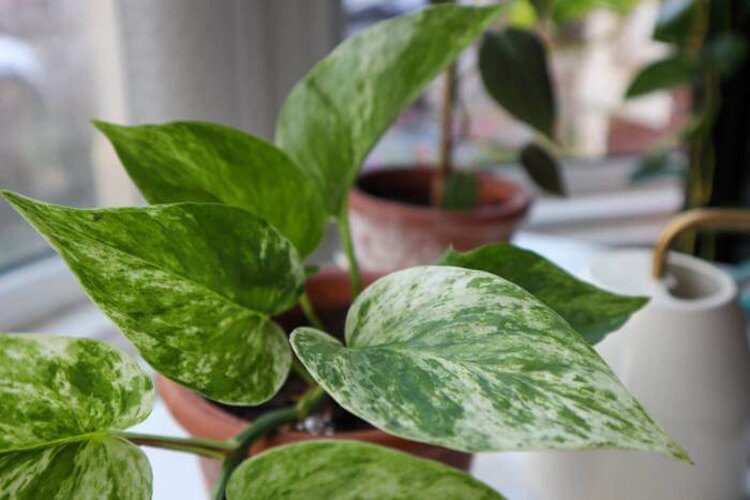How Often Should I Water My Pothos Plant? The Ideal Time
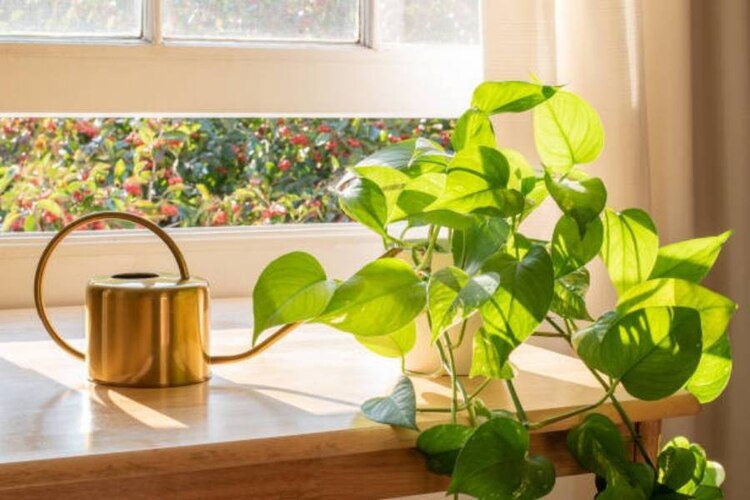
Pothos is a well-known plant that is well-liked by novice gardeners since it requires little maintenance. It doesn’t need a lot of water, but it’s better to have a consistent watering plan to make it healthy and good-looking.
How often should I water my pothos plant? If you haven’t had a proper watering schedule, let’s refer to this article immediately!
How Often Should I Water My Pothos Plant?
You should water Pothos plants every 7 to 14 days. Besides, keep an eye out for dehydration in the soil and moisture in the plants as soon as it happens.
When you give it water, thoroughly bathe your tree so that liquid flows through all of its roots. This plant requires more moisture in the warmer months than in the winter. Avoid overwatering it because doing so is unhealthy for it.
If something goes wrong, your plant will begin sending you a message through withering and drooping foliage.
Pothos Watering Frequency: Is This An Affecting Factor?
Pothos are hardy plants, so they only need a little understanding and essential maintenance. It is preferable to learn about the factors that influence Pothos’ watering schedule in order to keep them healthy all year.
Seasons
In the summer:
Summertime brings a higher average daily temperature, which requires more regular watering. You must make up for the moisture that evaporates into the atmosphere. How often should you water a Pothos in summer? When the weather is hot, it’s better to water your plant two to three times each week.
Your tree will be safe unless you are in a scorching and dry region. You will need to enhance your watering strategy in such a situation. The best time of year for young leaves to sprout is during the summer.
A temperature of 80 °F and a humidity of at least 70% are necessary for your Pothos. If you struggle to increase the moisture in your home, a humidifier will be an excellent helper. Use a wooden skewer or your finger to probe the topsoil to ensure it is dry before watering.
Your tree requires refreshing water when the first few inches are dry. The humidity increases and the temperature lowers on summer days when it rains. In this type of weather, make sure to inspect the soil frequently. Your plant might only need to be watered once a week.
In the winter:
Pothos has a lengthy napping season throughout the winter. Since they are primarily inactive during this period, you won’t see much growth. Pothos plants, being tropical plants, enjoy the warmth and sunbathing of intense indirect sunlight.
However, none of those things are available during the winter. How often do you water Pothos in the winter?
In the winter, Pothos plants should be watered when the top few inches of soil are dry, rather than on a specific schedule. Wintertime living in cold climates might be a little challenging since your tree won’t take in as much moisture as it should. Rainwater, melting snow, or lukewarm water are all acceptable. To prevent the plant from experiencing temperature shock, ensure it is at room temperature, around 70° F.
Light
The source of the light’s strength, whether artificial or natural, must not burn or harm the leaves. Your plants will require moisture regularly because they are exposed to intense light.
To avoid overwatering the soil, let it dry between irrigations. If you do not provide solid indirect light, you will notice that the topsoil dries more slowly. If you put the plant outside, the soil will dry out more quickly, so you will need to water it more often. Avoid direct sunlight exposure if the soil does not appear to be drying out, or your Pothos will benefit from watering. Although you may want to give them more attention, doing so will only cause your plant problems in the future.
Temperature
Seasons and temperature are undoubtedly tightly connected. Pothos, a tropical plant, needs temperatures from 70°F to 90°F. Both new leaves and older foliage grow best at that temperature. How frequently do you water your Pothos plants? Once the temperature falls within this range, you may give your plant a once-a-week watering.
Extremely low and high temperatures can lead to degenerative development that messes with the flow of water through your tree. As a result, stressed roots may cause your plant to absorb less water. Before the plant’s rhizomes are irreparably damaged, be careful to provide an atmosphere with the right temperature.
Humidity
High humidity is ideal for Pothos, yet they need water to obtain the necessary nutrients and promote development. Pothos prefers humidity levels ranging from 50% to 70%. They require moisture less often when the humidity is high. However, sitting with low moisture content may damage foliage, so avoid it if possible.
Root Systems
It’s best to water them thoroughly until the drainage holes are clear of any extra water. The watering frequency may increase if the rhizomes are root-bound, solid, and receiving the appropriate cultural needs, as opposed to a sick rhizome.
The root systems won’t absorb moisture as fast if they become sick; they will also decay and draw in other problems. Whenever your plant exhibits unusual behavior, probe the roots to determine their health.
Pot Type
Your plants will require less water if planted in plastic containers. Plastic containers will slowly dry since they are not permeable. Earthenware and ceramic pots are great options. It would be best to give your plant more frequent waterings since they can absorb moisture more quickly.
The most excellent option for Pothos is, without a doubt, terracotta containers. Terracotta containers are pretty porous, so water can dry off evenly and quickly if you plant your tree in these pots. Pothos-housed indoor plants in these Terracotta pots will require more frequent watering.
Soil
A soil combination that drains well requires more regular watering. The requirement for watering will decrease, though, if the gardening mix is dense. Aerated soil improves moisture absorption by swiftly draining the excess liquid and allowing air to pass through the ground and roots. Poor-quality or heavy gardening soil may take a long time to drain out and produce damp soil lumps.
How Do You Know If Your Pothos Plant Needs Water?
When is the best time to water pothos plants? There are several methods for figuring out whether your tree needs watering.
Soil Color
When the soil is dry, it is a lighter brown than when it is wet. The soil’s top surface may have a few cracks. The quantity of mineral content and organic matter in the topsoil will determine its hue, which is a crucial point to notice. Nonetheless, the rule of thumb is that the lighter the hue, the dryer the soil.
Moisture
To determine whether the soil is damp, poke a wooden stick or your finger 1-2 inches into the ground. When you see that it is dry, you should water it.
Otherwise, you can use a moisture meter. A moisture meter detects humidity in the ground by inserting a probe. It will indicate whether or not your plant requires watering.
Drooping Leaves
These symptoms indicate a plant has received too much moisture. It takes place as a result of the plant seeking to absorb more liquid than it can take.
As a result, the foliage becomes droop, depressed, and occasionally wilted. Keep your Pothos dry if you see these symptoms. Allow the tree to heal before cutting off the fully damaged pothos leaves using gardening shears.
Browning And Yellowing Leaves
These signs typically point to soil compaction, root issues, and excessive watering. Chlorophyll begins to degrade since the foliage can’t acquire the essential minerals required. Repotting the tree into fresh, well-drained topsoil in a container is advisable. Check for fungal diseases on the rhizome.
How To Water Your Pothos Plant?
If it’s your first time planting Pothos, watering may be challenging. Let’s refer to the method below:
Water Your Pothos From Above
To prevent fluid from spilling on the foliage, use a tiny watering pitcher that ideally has a long spout.
Water Your Pothos From Below
You can bottom water your plant by half-filling the container with water and checking to determine how much moisture your plant has absorbed after waiting 30 minutes. You may check the dampness with your finger. Discard the excess fluid from the container after it reaches the ideal level. You may sense damp soil.
Use A Self-Watering Pot
A growth area and a water storage area make up a self-watering pot. The pot features a lateral aperture, or pipe, that enables liquid to be poured into the reservoirs. It functions by supplying moisture to your tree through capillary action.
Watering Pothos Plants: Extra Tips
Here are some additional application tips to ensure you don’t overwater or submerge your Pothos:
- Maintain uniform soil moisture.
- Dry between waterings.
- Water your pothos in the early morning or late at night.
- Avoid drought and waterlogging.
- Avoid watering the foliage directly.
- Opt for well-drained topsoil.
- Water your pothos after repotting.
Conclusion
As a general rule, you should water your tree every 7 to 14 days. However, this schedule may change depending on several factors. It’s best to consider seasons, light, temperature, humidity, root systems, pot type, and soil to build a suitable watering plan for your Pothos.
Thanks for taking the time to follow this post!
Related posts:



